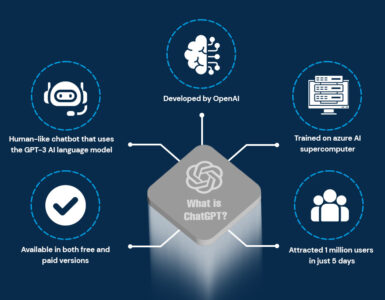With another year full ahead in the Supply Chain and Logistics Industry, we all wonder what the year of 2022 will bring.
As per Nasdaq “Port Story” the bottlenecking and port congestion will take approximately another 12 months to recover.
Top 5 causes of port congestion?
Over the last 20 years the shipping industry has evolved tremendously. Most merchandise is now transported by Sea. The ports capacity has not increased although there is such an increase in e-commerce sales throughout the world.
- Container depots are packed beyond capacity and are unable to take on more cargo. Covid 19 protocols also led to delay in offloading containers as port workers was spread out and staff count was reduced.
The high volumes of containers coming into North America’s leading seaport, the Port of Los Angeles, have caused major disruptions across organizations and the global supply chain. - With the lack of staff to work in Warehouses or Truckers to transport the goods is a major challenge in the industry.
The implementation of the congressional EDL mandate and tariff wars between the U.S. and China have caused driver shortages to increase the logjams and have worsened port congestion. - Worldwide shortage of shipping containers, and the costs of shipping goods have increased significantly . Shipping costs from China to the U.S. are up 500% from last year.
- Ships filled with goods stuck waiting for a berth; some await a truck or rail train to take the cargo to another terminal, distribution centre, or warehouse.
The Ports of Los Angeles and Long Beach — the two biggest gateways for U.S. imports — are not far behind. Both ports hit unusual levels of congestion in recent months, with nearly 40 cargo vessels anchoring for an average of 7.5 days, awaiting berths to safely and securely unload and load cargo.
Freeing of the Ever Given container ship in the Suez Canal in March 2021 has caused the majority of the congestion in 2021 and the Canal has lost billions in revenue. Carriers had to anchor or use nearby drift zones for the first time since 2004 to REDIRECT maritime traffic into neighbouring ports. In fact, some terminal operators downright refused to berth ships due to the lack of space for unloaded containers.
SCA chairman Osama Rabie stated that the Canal’s revenues were taking a $14m-$15m (£10.2m-£10.9m) hit for each day of the blockage.
Nine out of 10 logistics and transportation companies indicate their operations have been negatively impacted by the pandemic
https://new.abb.com/news/detail/83210/logistics-industry-accelerating-robotic-automation-following-pandemic
What are some of the hinderances a Freight Forwarder experiences during Port Congestion?
Freight forwarders manage the transportation of goods from Point A to Point B. They need to deliver the goods from the seller to the buyer. and are responsible for determining the most efficient and cost-effective routing possible.
- Unloaded vessels will result in thousands of dollars in losses per day. The longer a carrier is waiting at anchor to berth, the higher the costs are raised.
- Some of these costs are maintenance, fuel, and other operational freight rates.
- Incomplete or inaccurate data that is submitted resulting in delays in receiving or sending of goods.
- Seaport Freight Services, a UK company, had 20 containers of goods stranded on the Ever Given. There were concerns that if the blockage at the Suez Canal continued, some firms will have to pay to order more goods and have them sent over by air freight, which costs at least three times more.
We’re waiting on food goods like coconut milk and syrups, some spare parts for motors, we’ve got some forklift trucks, some Amazon goods on there, all sorts,” the company said.
https://mfame.guru/suez-canal-blockage-countless-businesses-hit/
How can digital shipment tracking help shippers manage port congestion?
Investing in new technologies might well be the way to go in the long run to ease the port congestion problem.
Will Port Congestion Ease in 2022? | The Motley Fool, https://www.fool.com/investing/2021/11/06/christine-will-port-congestion-ease-in-2022/.
For shippers, new tools like digital shipment tracking allows companies to trace the journey of its cargo from vessel to termination, improving communication and boosting the ability to anticipate and correct any transport issues.
There is no one reason for port congestion however the pressures of the pandemic indeed play a part.
RPA and Cognitive Machine Reading is one way of AI Implementation that is cost-effective but highly effective when used in the supply chain business.
How can AI solutions help shippers?
- AI solutions can help shippers quickly spot patterns in the logistics supply chain that a human controller might miss, offering valuable insights and better road maps to improve efficiency in the movement of goods.
- Automated scheduling of reports or notifications can eliminate the problem by processing factors like at-risk containers, hazmat regulations and other concerns
- Shipments can be processed at the port with little difficulty before it arrives.
These solutions are adaptable and changes day to day as the situation changes at the port destination, in areas such as fluctuating congestion levels at the terminal or a shortage of chassis.
Viewpoint: The causes of port … – Gemini Shippers Group, https://www.geminishippers.com/viewpoint-the-causes-of-port-congestion-and-tactics-to-improve-efficiency/.
Shippers and carriers can also make use of load boards, or digital marketplaces, to connect with freight brokers and find more efficient means to keep a load moving.
What does the experts say on use of technology or services to digitalise the supply chain?
- What was overwhelmingly and unexpectedly clear, COVID-19 pushed legacy processes and BPOs well beyond peak capacity. They were also exposed for their inefficiencies and reliance on manual processing. The pandemic made executives rethink DX (data exchange) and the role advanced technologies could play in the future of business. At the top of the list are RPA and hyper automation. COVID-19 accelerates enterprise use of automation in …, https://www.cio.com/article/193608/covid-19-accelerates-enterprise-use-of-automation-in-digital-transformation.html. June 2020, Brian Solis, Contributor, CIO,
- Gartner defines hyper automation as “an approach in which organizations rapidly identify and automate as many business processes as possible. It involves the use of a combination of technology tools, including but not limited to machine learning, packaged software and automation tools to deliver work.” Gartner predicts that by 2024, organizations will lower operational costs by 30% by combining hyper automation technologies with redesigned operational processes. This is likely to accelerate in the wake of COVID-19. Top 4 Digital Technology Trends to Stay Ahead in 2021 …, https://www.ilink-digital.com/insights/blog/4-top-digital-technology-trends-to-stay-ahead-in-2021/.
- In this Harvard Business Review webinar, Stefan Schrauf—co-author of “Industry 4.0: How Digitization Makes the Supply Chain More Efficient, Agile, and Customer-Focused” — shares insights on how digitization is transforming supply chains. Schrauf discusses: https://hbr.org/webinar/2017/10/digitizing-the-supply-chain
– The integrated supply chain ecosystem
– The evolution of the digital supply chain
– Eight key elements of digital supply chain
– Frameworks to improve logistics and supply chain visibility
– Digitization of procurement
– Analytics, robots, and 3D printing in the supply chain
4. Digital solutions, like mobile apps and real-time container tracking, can be easily incorporated for drivers and carriers and ensure safety changes are readily available. If drivers can quickly access assistance — in relation to COVID concerns as well as viewing changes to rates and benefits and the status of load and containers — the margin for evitable bottlenecks shrinks. By Lidia Yan, CEO at NEXT Trucking
How can SFL optimise your supply chain operations?
Cargo Doc
SFL who is a Platinum Wisetech Partner has collaborated with Deep Cognition and created Cargodoc – visit the website Cargodoc.ai for more information on an OCR white label “Virtual Digital Assistant” that is designed specifically for all CargoWise customers. Use CargoDoc for File creations or to automatically capture and post commercial invoices, AP invoices, Import and Export BOL.
BPO and RPA
For many years people and businesses have been using virtual assistants or back offices to fill up the gaps for them. Either for data capturing, calendar upkeep, marketing, payroll, bookkeeping etc.
Using software tools that can minimise human error and speed up processes is the type of automation that your business requires.
Accelerating the need for data to be pushed into your ERP system faster and more accurate is what will drive your business to a GLOBAL BUSINESS!!!
SFL’s BPO team uses RPA as a digital tool for faster turnaround times to clients which is used mainly for tariff updates (Buy and Sell rates), update of exchange rates (if integration not yet used), file creations and many other tasks required on demand. SFL clients have the privilege of using RPA in their business without having to worry about development or upgrade costs etc.
SFL Insights
White Label Web/Mobile application solution for your logistics business.
CLICK BELOW LINK FOR MORE INFORMATION
Digital Marketing
Website Design and Development
– Inbound marketing
– Reports and Documentation
CLICK BELOW LINK FOR MORE INFORMATION
SFL Connect
Read the full case study in our resources section on the the various integrations SFL and CW1 offers
Rather than awaiting national-level solutions to trade imbalance and demand surges, shippers and carriers should act now to modernize operations across the supply chain.
Companies that utilise the digital tools available will have what is required to carry them successfully beyond the ripple effects of the pandemic which currently has no expiration date.
Contact us today at connectwithus@softfreightlogic.com to discuss the digital tools compatible with CW1 to elevate your business.
https://softfreightlogic.com/






